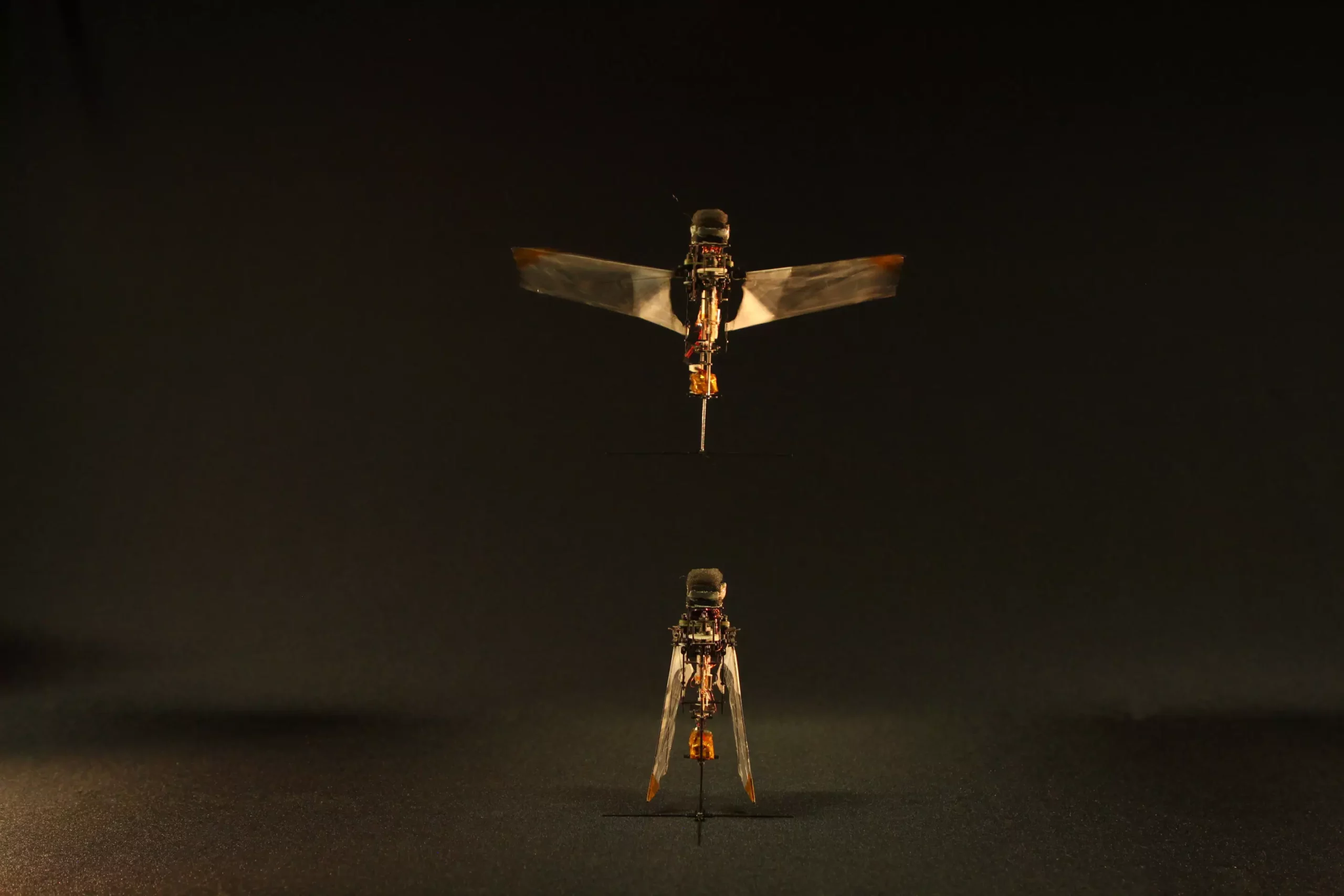Many flying robotic systems draw inspiration from the wing dynamics of birds, bats, and insects. While the mechanisms behind the wing movements of birds and bats are well understood, the processes underlying many insects’ wing movements remain a mystery. Researchers at Ecole Polytechnique Fédérale de Lausanne (EPFL) and Konkuk University recently delved into how herbivorous insects like rhinoceros beetles deploy and retract their wings. Their findings were published in Nature and led to the development of a new flapping microrobot that mimics these passive wing movements.
Through their research, the team discovered that beetles, specifically rhinoceros beetles, use a two-phase wing deployment process. Unlike birds and bats that rely on thoracic muscles to actively deploy and retract their wings, beetles deploy their wings passively using their elytra and flapping forces. This passive mechanism is not only intricate but also efficient, allowing them to take flight without expending excessive energy.
By implementing these passive mechanisms in a flapping microrobot, the researchers were able to create a lightweight and agile robotic system. This microrobot, weighing 18 grams and larger than an actual beetle, can fold its wings along its body when at rest and passively deploy them for takeoff and stable flight. The use of elastic tendons at the armpits enables the robot to close its wings without the need for additional actuators, making it a groundbreaking innovation in the field of robotics.
The potential applications of these flapping microrobots are vast, ranging from search and rescue missions in confined spaces to studying the biomechanics of insect flight. These robots could also serve as spy insects in forest environments, where conventional drones are not applicable. Additionally, the unique design of these robots allows them to be used as educational tools for engineering research or as toys for children, thanks to their safe and human-friendly operation.
Looking ahead, the researchers aim to further improve the performance of their microrobot and test it in various real-world scenarios. They are also interested in exploring whether other insects, such as tiny flies, utilize similar passive strategies due to limited muscle availability. By delving deeper into the complexities of insect wing dynamics, researchers hope to unlock new insights that could revolutionize the field of robotics and biomimicry.
The study of insect wing dynamics, particularly in rhinoceros beetles, has paved the way for innovative advancements in flapping microrobots. By unraveling the passive mechanisms behind wing deployment and retraction, researchers have created a new breed of lightweight robots that mimic the agility and efficiency of insects. As these technologies evolve, the possibilities for their applications in various fields continue to expand, promising a future where robotic systems can seamlessly integrate with natural ecosystems and human environments alike.


Leave a Reply